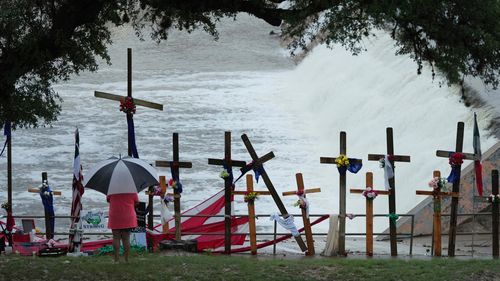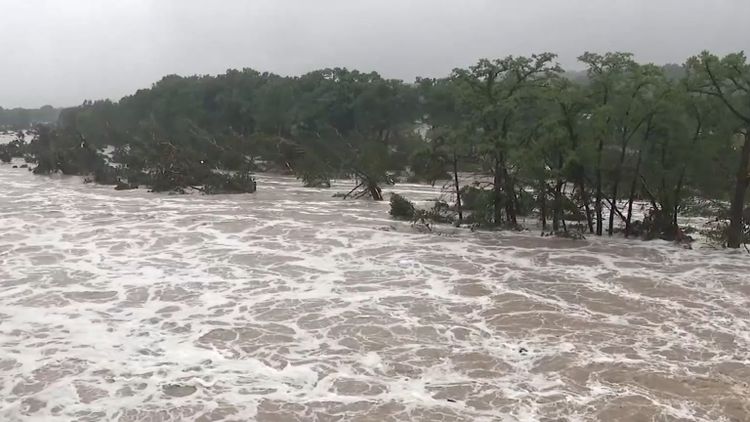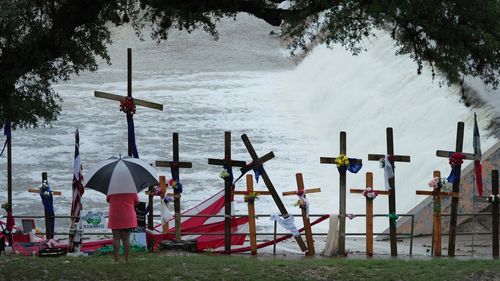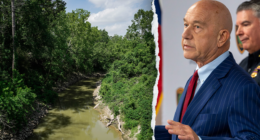Share this @internewscast.com
On Sunday, more heavy rainfall in Texas interrupted an ongoing weeklong search for victims impacted by the severe flooding along the Guadalupe River. The downpour also triggered high-water rescues in other regions, prompting officials to caution that these rains could once again cause waterways to overflow.
It was the first time a new round of severe weather had paused the search since the July 4 floods, which killed at least 129 people.
Authorities believe more than 160 people may still be missing in Kerr County.

“My wife was freaking out, that’s for sure, but as long as that river is not coming down, we’ll be all right,” he said.
“The cops have been coming back and forth, we’re getting lots of alerts, we’re getting a lot of support.”
Just before daybreak on July 4, the destructive, fast-moving waters rose 8 metres on the Guadalupe River, washing away homes and vehicles.
Since then, rescuers have been employing helicopters, boats, and drones to locate victims and help those trapped in trees or isolated camps due to roads being washed away.
The floods laid waste to the Hill Country region of Texas.
The riverbanks and hills in Kerr County, home to holiday cabins, youth camps, and campgrounds like Camp Mystic, a historic Christian summer camp for girls, have been widely affected.
Located in a low-lying area along the Guadalupe River in a region known as flash flood alley, Camp Mystic lost at least 27 campers and counselors.

The flood was far more severe than the 100-year event envisioned by the Federal Emergency Management Agency, experts said, and moved so quickly in the middle of the night that it caught many off guard in a county that lacked a warning system.
The sheer amount of rain was overwhelming. Former NOAA chief scientist Ryan Maue, a private meteorologist, calculated on July 5 that the storm had dropped 120 billion gallons of water on Kerr County, which received the brunt of the storm.














